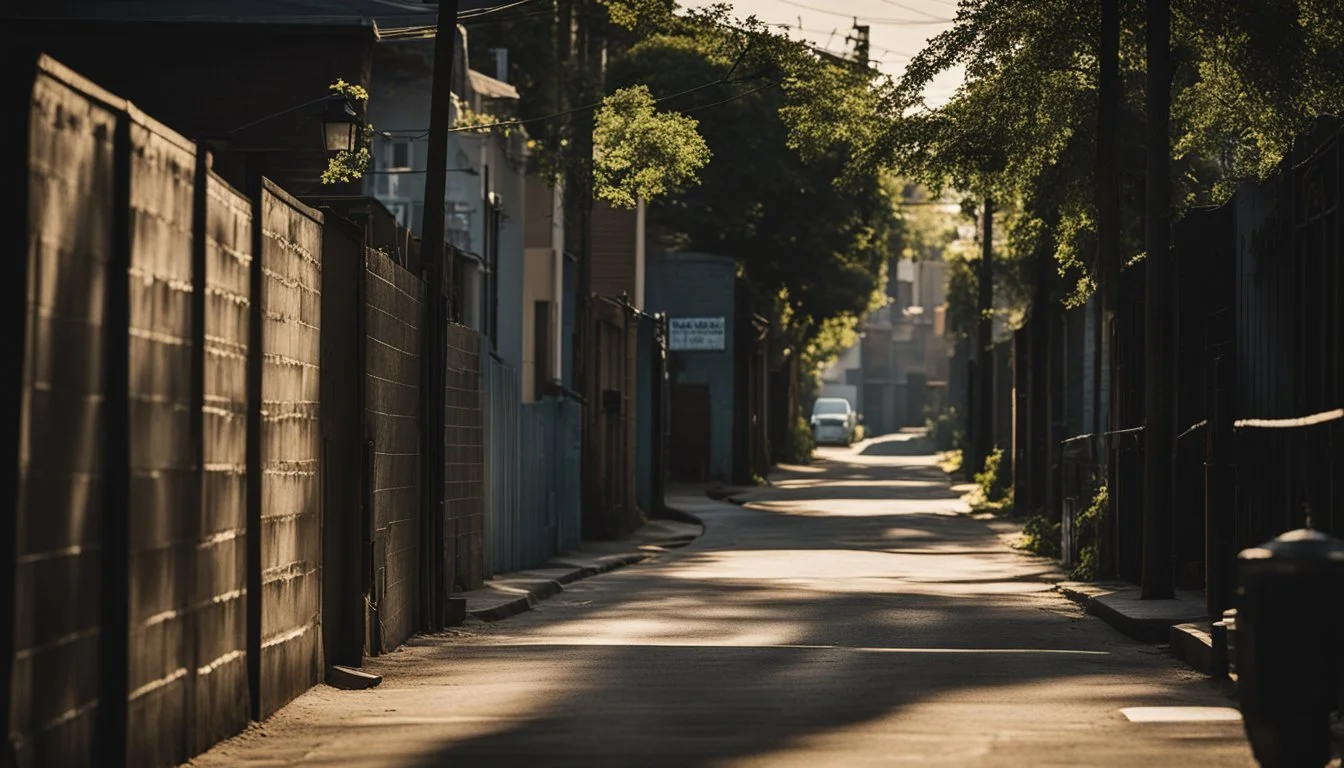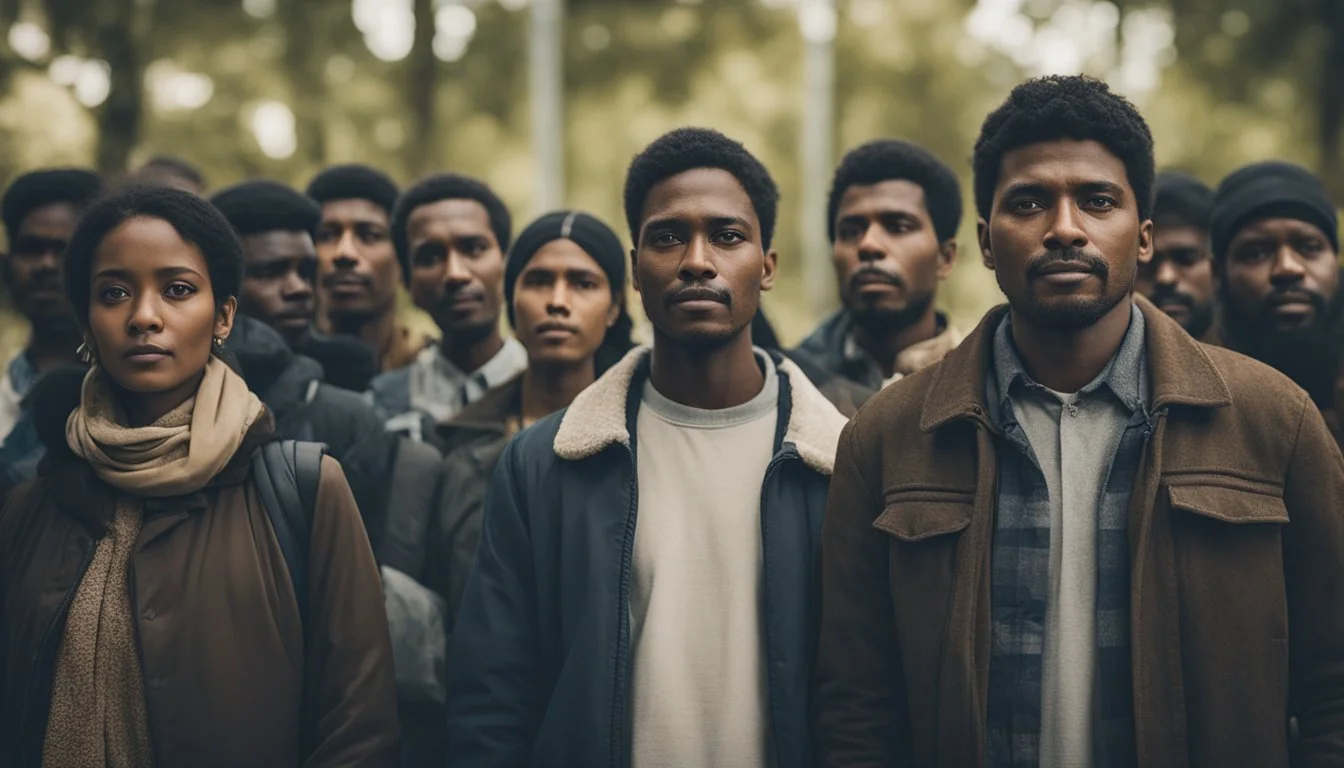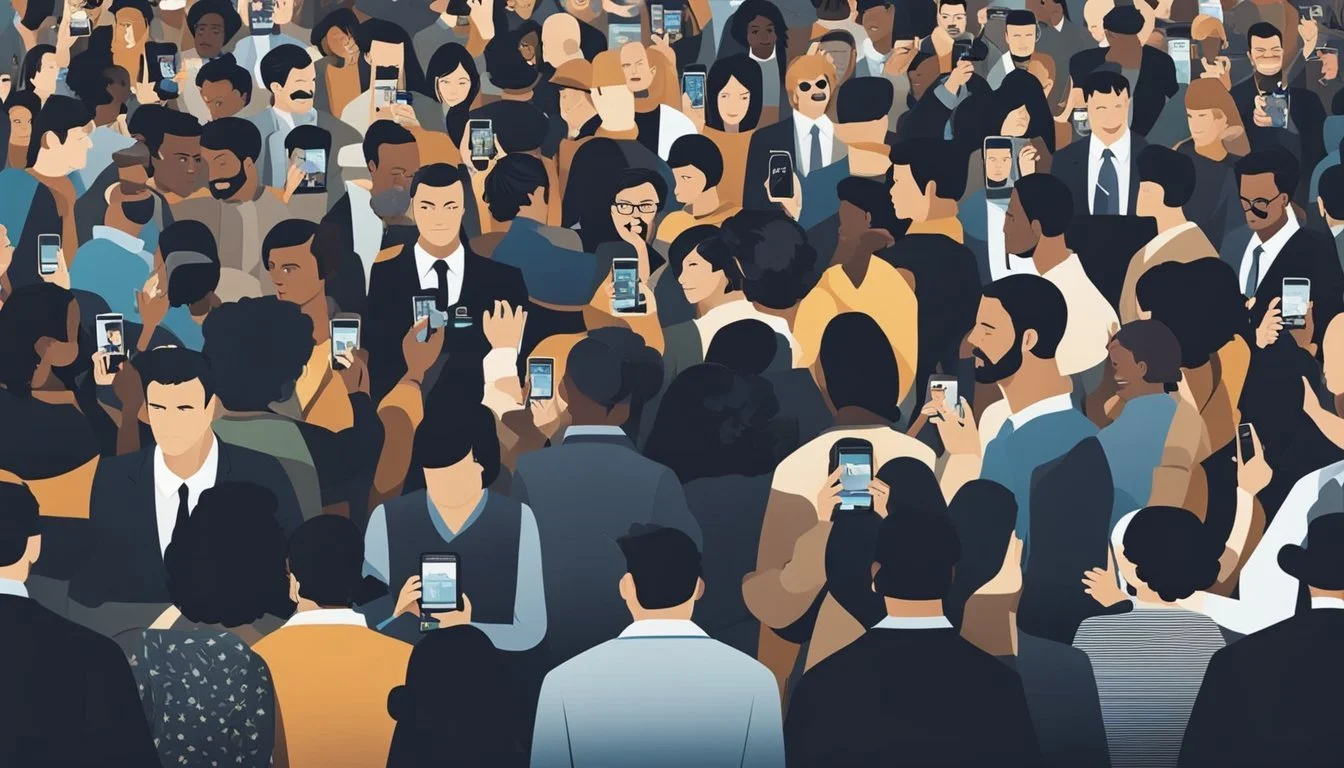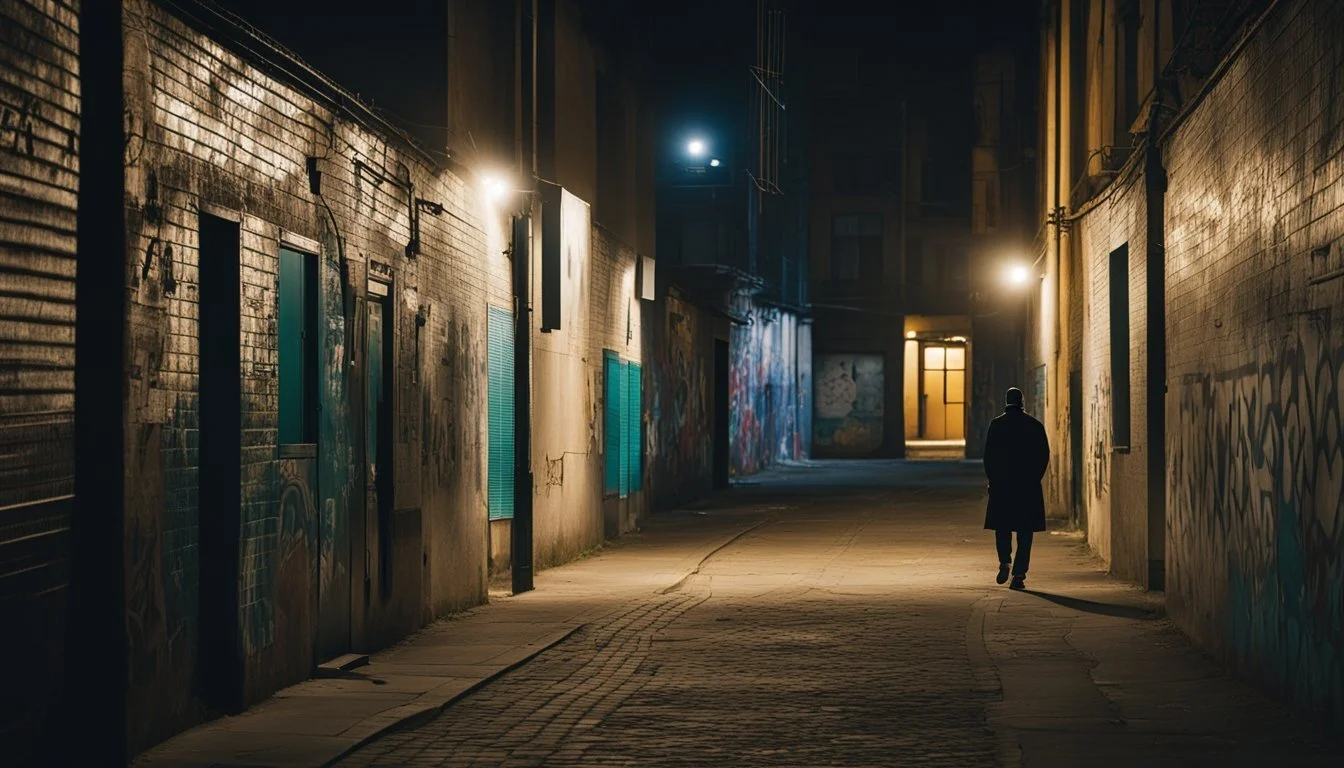7 True Crime Documentaries About Human Trafficking in Immigrant Communities
Eye-Opening Stories and Insights
Human trafficking remains a critical global issue, particularly affecting immigrant communities. This crime involves the exploitation of vulnerable individuals through forced labor, sexual exploitation, and other coercive means. By understanding the intricate dynamics of human trafficking within these communities, the public can gain better insight into the struggles faced by victims and the ongoing fight against this violation of human rights.
Documentaries offer a powerful visual medium to highlight the harsh realities of human trafficking. Through real-life stories, survivor testimonies, and thorough investigation, these films shed light on the physical, emotional, and psychological toll on victims. These comprehensive narratives not only inform but also inspire action and awareness, crucial steps in combating this pervasive issue.
1) The Price of Free (2018)
"The Price of Free" highlights the global issue of child trafficking and labor exploitation. Directed by Derek Doneen, it follows the life and work of Nobel Peace Laureate Kailash Satyarthi.
Satyarthi's mission is to rescue children forced into labor across India. The film documents the daring raids he conducts to free these children from slavery-like conditions.
The documentary offers viewers an unfiltered look at the harsh realities faced by trafficked children and the systemic issues that perpetuate their exploitation. It also portrays the challenges and risks involved in Satyarthi's rescue operations.
By focusing on real-life events, "The Price of Free" underscores the urgent need for global action against human trafficking. It emphasizes the importance of advocacy and community support to combat this issue effectively.
2) Trafficked in America (2018)
"Trafficked in America" is a compelling documentary that explores a significant labor trafficking case involving teenagers from Central America. The documentary highlights how these teens were smuggled into the U.S. by traffickers who promised them jobs and a better life.
Once in the U.S., the teenagers were forced to work against their will at an egg farm in Ohio. They endured harsh working conditions, living in virtual slavery to pay off their debt to the traffickers.
Produced by Daffodil Altan and Andrés Cediel, with Altan serving as the correspondent, the investigation was a joint effort by FRONTLINE and the Investigative Reporting Program at U.C. Berkeley. The film brings to light the exploitation faced by these young immigrants and the challenges in addressing labor trafficking within the U.S.
The documentary provides detailed insight into the mechanisms of trafficking networks, as well as the legal and social hurdles victims face in escaping such conditions. It's a stark reminder of the vulnerabilities of immigrant communities.
More information on "Trafficked in America" can be found on IMDb.
3) From Liberty to Captivity
This documentary offers a deep dive into the dark realities of human trafficking within immigrant communities in the United States.
Through the lens of survivors, "From Liberty to Captivity" (2018) portrays the harrowing journey from freedom to enslavement. The film uncovers the hidden networks that exploit vulnerable individuals, often luring them with promises of a better life.
The documentary takes viewers into the lives of immigration officials, law enforcement, and advocates working tirelessly to combat human trafficking. Their commentary provides a broad understanding of the systemic challenges and the urgent need for comprehensive solutions.
Survivor narratives are central to this film. Their stories shed light on the traumatic experiences they endure and their fight for justice and recovery. The film emphasizes the importance of societal awareness and action to address the root causes of trafficking.
"From Liberty to Captivity" also explores policy changes necessary to protect immigrants from falling prey to traffickers. It encourages viewers to become more informed and engaged in combating human trafficking at community and national levels.
For more information, visit IMDB.
4) Americans on Hold: The Human Trafficking Epidemic
"Americans on Hold: The Human Trafficking Epidemic" (2020) illuminates the covert world of human trafficking within immigrant communities in the United States. This documentary uses firsthand accounts to reveal the diverse forms of trafficking, such as forced labor and sexual exploitation.
It traces the pathways of traffickers who exploit vulnerable immigrants, shedding light on the abuse and manipulation they face.
The film scrutinizes the systemic failures that allow trafficking to flourish, examining the legal and social environments that enable these crimes.
Through powerful storytelling, this documentary encourages viewers to confront the tragic realities of human trafficking that often go unnoticed in their own communities.
For more details, visit the IMDb page.
5) The Abolitionists (2014)
The Abolitionists is a powerful documentary that sheds light on the grim reality of human trafficking specifically in immigrant communities. The film follows Tim Ballard, a former Homeland Security and CIA agent, who has dedicated his life to fighting this global issue.
Tim Ballard leads Operation Underground Railroad, an organization that conducts high-risk rescue operations to save children from sex trafficking. The documentary captures these intense missions, providing a stark view of the dangers and challenges faced in rescuing victims.
The film highlights the heartbreaking stories of the children and the unyielding efforts of Ballard and his team. By documenting both the operations and the personal stories, The Abolitionists emphasizes the urgency of addressing human trafficking.
The documentary also touches on the systemic issues that allow trafficking to thrive, including corruption and lack of resources. This aspect provides viewers with a broader understanding of the complexities involved in combating this crime.
For more details, visit the IMDB page.
6) Not My Life (2011)
Not My Life is a powerful documentary directed by Robert Bilheimer. It addresses the harsh realities of human trafficking and modern slavery across the globe.
The film takes viewers through various countries and showcases the severe exploitation of children. Practices such as forced labor, domestic servitude, and sex tourism are highlighted.
The documentary includes footage from five continents and a dozen countries. It effectively underscores the scale of the problem and the suffering of countless victims.
Not My Life also emphasizes the economic gains traffickers make from these horrendous acts. The documentary aims to raise awareness and stir global action against these crimes.
For further details about the film, visit the Wikipedia page for Not My Life.
7) Shadow in the Dark (2016)
"Shadow in the Dark" delves into the tragic world of human trafficking within immigrant communities. Released in 2016, this documentary captures the harrowing experiences of those ensnared in modern-day slavery.
The film reveals the methods traffickers use to exploit vulnerable individuals seeking better lives. Through deceit and coercion, victims find themselves trapped in abusive situations, far from the safety they sought.
With intimate interviews, the documentary allows survivors to share their stories. These personal accounts highlight the resilience and courage of individuals who have endured unimaginable hardship.
By focusing on immigrant communities, "Shadow in the Dark" sheds light on a pressing global issue. It calls for urgent action and awareness to combat human trafficking and protect those at risk.
More detailed information about the "Shadow in the Dark" can be found on its IMDb page.
Understanding Human Trafficking in Immigrant Communities
Human trafficking in immigrant communities involves exploitation through various coercive tactics. Identifying these practices is crucial for effective intervention and support.
Definition and Scope
Human trafficking involves the recruitment, transportation, harboring, or receipt of individuals through force, fraud, or coercion. In immigrant communities, vulnerability due to unstable legal status or economic instability makes individuals prime targets.
Exploitation often spans forced labor, sexual exploitation, and domestic servitude. Immigrants may be coerced into trafficking situations through deceptive job offers or manipulated by debts. Children are particularly at risk, often involved in the worst forms of abuse.
Common Tactics and Methods
Traffickers use a range of methods to manipulate and control their victims. False promises of employment and high wages are common lures. Once entrapped, victims face threats of violence, isolation from families, confiscation of passports, and psychological abuse.
Debt bondage is a prevalent tactic, where victims are forced to work to repay alleged debts, an amount often inflated or impossible to clear. In many cases, human traffickers may pose as reputable agents or community members to gain trust. Recognizing these tactics is vital for prevention efforts.
Impact on Victims
Human trafficking in immigrant communities leads to profound physical and mental health consequences. It also has long-lasting effects on the victims' families, disrupting relationships and causing significant emotional distress.
Physical and Mental Health Consequences
Victims often suffer severe physical injuries from abuse and harsh working conditions. Chronic pain, malnutrition, and untreated medical conditions are common.
Mental health impacts include depression, anxiety, and PTSD. Survivors may also experience substance abuse issues as they attempt to cope with trauma.
Healthcare for trafficked individuals is often delayed or denied, exacerbating these problems. It's critical for healthcare providers to be trained in identifying and caring for trafficking victims, addressing both immediate health needs and long-term psychological support.
Long-term Effects on Families
Human trafficking disrupts family structures, often separating individuals from their loved ones for extended periods.
Children born into or involved in trafficking situations face disrupted childhoods, lacking stable and supportive environments. These children are at higher risk for continuing the cycle of abuse and exploitation.
Families back home may suffer financially and emotionally, as trafficked individuals often were their primary support. The ripple effect extends to entire communities, amplifying the harm caused by trafficking.
Reconnecting and rebuilding these shattered families requires tailored support services, focusing on helping them rebuild trust and regain stability.
Legal and Social Responses
Efforts to combat human trafficking in immigrant communities span both legal frameworks and community-driven initiatives. Current laws and policies aim to dismantle trafficking networks, while NGOs and local organizations provide essential support to survivors.
Current Laws and Policies
Governments have enacted stringent laws targeting human trafficking. For instance, the United States' Trafficking Victims Protection Act (TVPA) imposes severe penalties on traffickers and offers protection and services to victims. Similar laws exist in other countries, focusing on prevention, prosecution, and protection.
Internationally, the United Nations Protocol to Prevent, Suppress and Punish Trafficking in Persons, especially Women and Children, serves as a comprehensive framework for nations to align their domestic laws. Efforts include cross-border cooperation among law enforcement agencies and stricter immigration controls to monitor and dismantle trafficking operations.
NGO and Community Support
Non-governmental organizations (NGOs) play a crucial role in aiding trafficking survivors. Groups such as Polaris and International Justice Mission (IJM) provide legal aid, emergency shelter, and counseling services to those affected. They work closely with local authorities and other stakeholders to ensure comprehensive care and rehabilitation.
Community-based programs focus on raising awareness and empowering local populations to identify and report trafficking activities. Workshops, educational campaigns, and hotlines are implemented to create informed and vigilant communities. The coalition of grassroots efforts and institutional support forms a robust network to combat human trafficking effectively.









